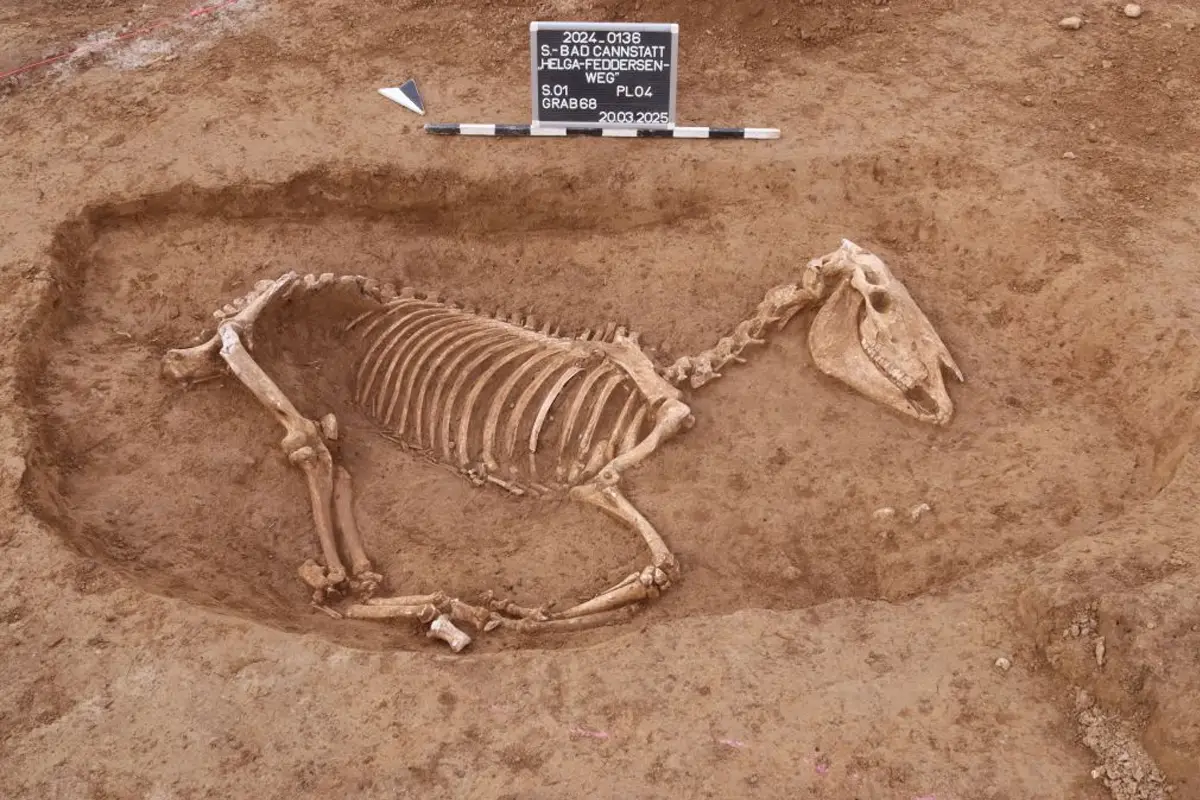Archaeologists from the State Office for Monument Preservation (LAD) have discovered a large cemetery for Roman cavalry horses during housing development works in Stuttgart-Bad Cannstatt, Germany.
A Roman castra (military camp) was established in AD 90 at Stuttgart-Bad Cannstatt to secure a strategic river crossing and safeguard regional trade routes. Contemporary sources note that the site was garrisoned by Alae forces composed of conscripts generally from Rome’s allies, as well as units of cavalry.
It is believed that a herd of over 700 horses was maintained to serve the cavalry units, an estimate supported by the discovery of a dedicated horse cemetery located approximately 400 metres from the castra.
Archaeologists have so far identified the skeletal remains of over 100 horses dating from the early 2nd century AD, which follows previous discoveries of horse remains found during the 1920’s.
According to archaeologist Sarah Roth, “Based on the archaeological and historical knowledge of the Roman castra at Bad Cannstatt, the horses can be assigned to the cavalry unit that was stationed from approximately AD 100 to 150.”
An analysis of the horse remains suggest they died at different time periods, indicating the animals likely died from illness or injury rather than a single event such as a battle or epidemic.
“The exact size of the horse cemetery remains unknown. It was certainly larger during Roman times than the 70 by 80 metre area in the northeast of the new building site where the skeletons were found,” added Roth.
Archaeozoological investigations are expected to reveal key details about the horses, including their sex, age, size, role as riding animals, possible illnesses, and causes of death.
Header Image Credit : LAD
Sources : State Office for Monument Preservation





